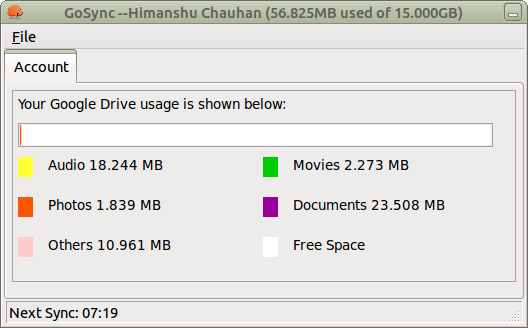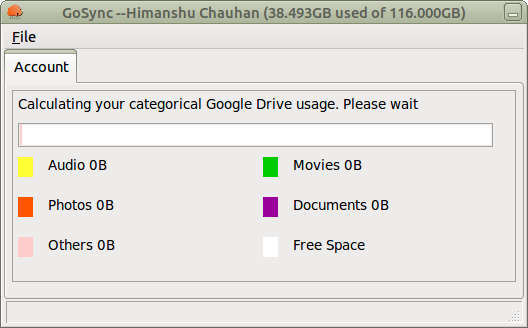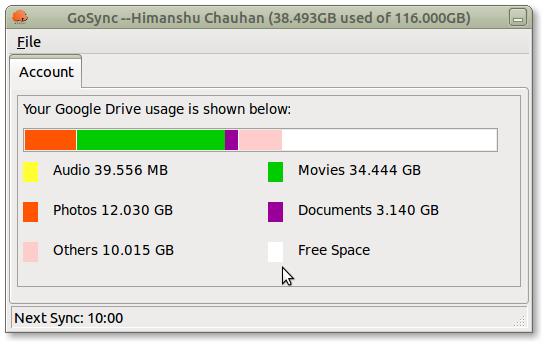It is no longer a thing of news that Google is yet to release an official drive client for Linux as they’ve done with competing platforms. This, however, hasn’t stopped the Linux community from creating both open source and proprietary softwares that would allow you access Google Drive from your Linux system.
The options available are however somewhat cumbersome and incomplete (if i was to put it that) and mostly have a steep learning curve.
Insync which is a paid software has managed to close this gap by providing a much more user-friendly software that works right out of the box but comes at a rather hefty price of $25 which is its biggest giveaway.
While there are a number of other free options like Google-drive-ocamlfuse, Reclone and Drive, they sadly still have their shortcomings.
GoSync is a rather new GUI-enabled Google Drive client for Linux written in Python and released under the GNU General Public License 2. The application is pretty much still in beta and with the most recent release at version 0.4.
GoSync is singularly developed by Himanshu Chauhan and he has closely worked with me in writing this article.
Installing GoSync
GoSync is quite as easy as you might have imagined given that it solely depends on Python and a few others as listed below with the hardest being getting your “client_secrets.json” file.
Installation instructions are only provided for Ubuntu and derivatives and CentOS; other distributions will have to clone the repo or download the zip archive.
- python (version >= 2.7. Version 3 not tested yet)
- wxPython (version >= 2.8)
- python-googleapi
- pip
- watchdog (to be installed from pip)
- PyDrive (to be installed from pip)
Install in Ubuntu and derivatives
You can basically “sudo apt” your way through via the terminal for the first three dependencies while the rest will be installed alongside GoSync via pip – all of which should be available in your standard repo.
$ sudo apt install python $ sudo apt install python-wxgtk2.8 $ sudo apt install python-googleapi $ sudo apt install python-pip
Installing GoSync and the remaining dependencies
$ sudo pip install GoSync
Install in CentOS
$ yum install -y python2.7 $ yum install -y python-wxgtk2.8 $ yum install -y python-googleapi $ yum install -y pip
Once installed, you’ll need to get your specific “client_secrets.json” and the steps are elaborated in pdf attached to the link below.
[mks_button size=”medium” title=”Authentication Token Generation for Google API” style=”squared” url=”https://mega.nz/#!ExQTzLYI!cUTptWMuHEQKm3a_DRQVVcVbDpfuu7IRwcqXnLSyYE0″ rel=”nofollow” target=”_blank” bg_color=”#ea4835″ txt_color=”#FFFFFF” icon=”” icon_type=””]
Having downloaded your “client_secrets.json” file, you’ll then copy it to your <your home directory>/.gosync, after which you may now run the program from the terminal by entering “gosync”.
There is still quite a few core features missing – like file modification and inability to sync files in the local directory to Google Drive – in GoSync as Himanshu only works on it in his free time.
However, there are plans on implementing these aforementioned features in future updates. Also, the dev encourages third party contributions as well as bug reports, so if you’ve got coding skills or you’d like to report issues, you can look up his GitHub to inspect his work on GoSync.




Hey guys, I am getting this message. Please help.
There’s an issue with the following installation –
sudo apt install python-wxgtk2.8
Trying the above returns the following –
Package python-wxgtk2.8 is not available, but is referred to by another package.
This may mean that the package is missing, has been obsoleted, or
is only available from another source
Any updated instructions for the installation? I was trying it on Elementary OS Loki (based on Ubuntu 16.04).
I believe Ubuntu 16.04 derivatives will have the same problem.
Thanks.
thanks pal, but im use grive right now, but will definately try it